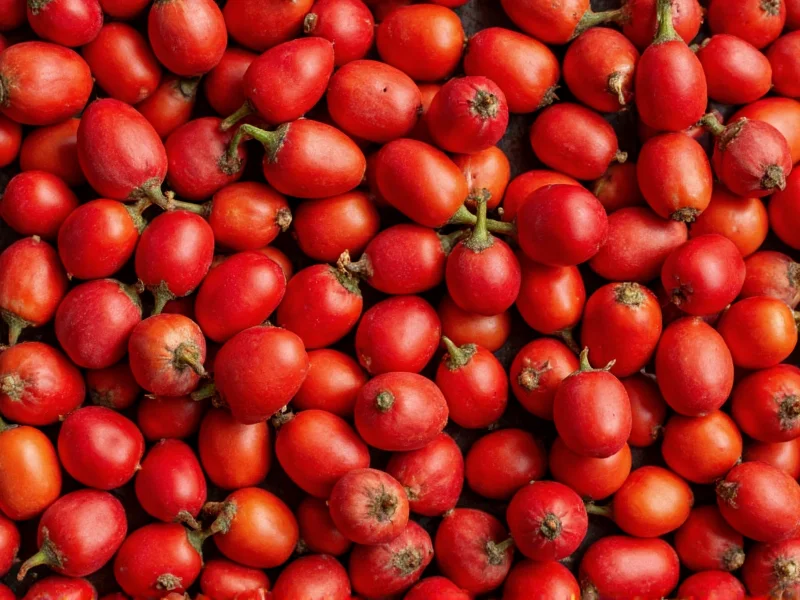When you bite into a peppercorn and feel that familiar burn, you might wonder: is peppercorn spicy? The answer requires understanding a crucial distinction in how our bodies perceive different types of heat. While both chilies and peppercorns create sensations we describe as “hot,” they work through completely different chemical compounds and affect different receptors in your body.
The Science Behind Peppercorn Heat
Peppercorns contain piperine, the compound responsible for their characteristic bite. Unlike capsaicin in chili peppers that activates TRPV1 receptors on your tongue (creating that familiar burning sensation), piperine stimulates different nerve endings primarily in your nasal passages and throat. This is why black pepper creates a sharp, immediate sensation that makes you sneeze rather than the lingering tongue burn from chilies.
Research published in the Journal of Agricultural and Food Chemistry confirms that piperine activates TRPA1 receptors, which respond to irritants like wasabi and mustard. This explains why peppercorn heat feels more like a sharp punch to your sinuses than the tongue-searing heat of habaneros or ghost peppers.
Peppercorn Varieties and Their Heat Levels
Not all peppercorns deliver the same intensity. The processing method significantly affects their pungency:
| Peppercorn Type | Scoville Heat Units | Heat Characteristics |
|---|---|---|
| Black Peppercorn | 10,000-30,000 SHU | Sharp, immediate heat with floral notes |
| White Peppercorn | 15,000-35,000 SHU | Milder, earthier heat with less complexity |
| Green Peppercorn | 5,000-15,000 SHU | Fresh, fruity with subtle heat |
| Pink Peppercorn | 100-500 SHU | Berry-like with barely noticeable heat |
Despite these measurements, comparing peppercorn heat to chilies using Scoville units is somewhat misleading. The SHU scale measures capsaicin concentration, not piperine. The perceived heat differs significantly because of how each compound interacts with your sensory receptors.
Why the Distinction Matters in Cooking
Understanding that peppercorns aren't “spicy” in the chili sense transforms how you use them in cooking. Chefs leverage this difference intentionally:
- Layering heat: Combining black pepper with chilies creates complex heat profiles where pepper provides immediate sharpness while chilies deliver lingering warmth
- Temperature sensitivity: Piperine breaks down at high temperatures, so adding pepper late in cooking preserves its distinctive bite
- Flavor balance: The pungency of pepper enhances other flavors without overwhelming them like intense chilies can
Professional chefs often describe pepper's role as “seasoning heat” rather than “spicy heat.” This distinction explains why you can add substantial black pepper to dishes without making them “hot” in the chili sense, yet still significantly impact the flavor profile.
Common Misconceptions About Pepper Heat
Several myths persist about peppercorn spiciness:
Myth: Black pepper gets hotter the longer it cooks
Fact: Piperine degrades with prolonged heat, actually reducing pepper's pungency in long-cooked dishes
Myth: White pepper is milder than black pepper
Fact: White pepper often tests higher on chemical heat scales, but its different flavor profile makes it seem milder to many palates
Myth: Pink peppercorns are just colored black peppercorns
Fact: They come from a completely different plant (Brazilian pepper tree) and contain negligible piperine
Practical Applications for Home Cooks
Knowing that peppercorns create pungency rather than spiciness helps you use them more effectively:
- Grind fresh: Pre-ground pepper loses 50% of its piperine within 15 minutes. Invest in a quality mill for maximum flavor impact
- Timing matters: Add black pepper during the last 5-10 minutes of cooking to preserve its distinctive bite
- Pair strategically: Combine with chilies for layered heat—pepper's sharpness complements rather than competes with chili burn
- Storage is key: Keep peppercorns in an airtight container away from light to maintain piperine levels
When following recipes that call for “spicy” elements, understanding this distinction prevents culinary mistakes. If a recipe specifies “black pepper for heat,” it's seeking that characteristic pungency, not chili-style spiciness. Substituting chili flakes would create a completely different flavor profile.
Conclusion: Beyond the Spice Spectrum
The question is peppercorn spicy reveals how imprecise our language is for describing sensory experiences. What we casually call “spicy” actually encompasses multiple biological responses. Recognizing that peppercorns deliver pungency rather than spiciness empowers you to use them more intentionally in your cooking, creating dishes with nuanced heat profiles that elevate rather than overwhelm your ingredients.











 浙公网安备
33010002000092号
浙公网安备
33010002000092号 浙B2-20120091-4
浙B2-20120091-4